Animals
Obst
Posted By: Paul - Sun Feb 02, 2020 -
Comments (1)
Category: Animals, Anthropomorphism, Food, Surrealism
Human-Animal Breastfeeding
In his 1826 book A Treatise on the Physical and Medical Treatment of Children, the American physician William Potts Dewees offered this advice for pregnant women: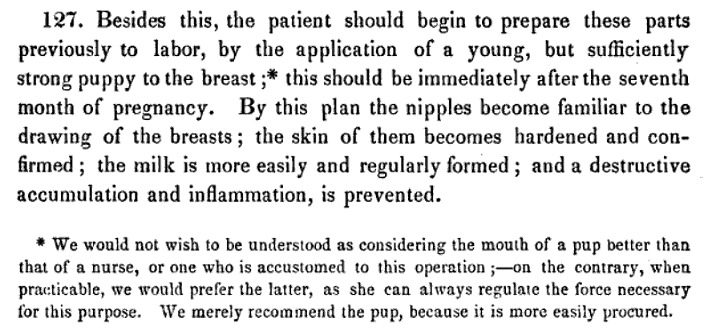
The Wikipedia article Human-animal breastfeeding offers some background info:
English and German physicians between the 16th and 18th centuries recommended using puppies to "draw" the mother's breasts, and in 1799 the German Friedrich Benjamin Osiander reported that in Göttingen women suckled young dogs to dislodge nodules from their breasts. An example of the practice being used for health reasons comes from late 18th century England. When the writer Mary Wollstonecraft was dying of puerperal fever following the birth of her second daughter, the doctor ordered that puppies be applied to her breasts to draw off the milk, possibly with the intention of helping her womb to contract to expel the infected placenta that was slowly poisoning her.
Animals have widely been used to toughen the nipples and maintain the mother's milk supply. In Persia and Turkey puppies were used for this purpose. The same method was practised in the United States in the early 19th century; William Potts Dewees recommended in 1825 that from the eighth month of pregnancy, expectant mothers should regularly use a puppy to harden the nipples, improve breast secretion and prevent inflammation of the breasts. The practice seems to have fallen out of favour by 1847, as Dewees suggested using a nurse or some other skilled person to carry out this task rather than an animal.
Posted By: Alex - Sat Jan 18, 2020 -
Comments (1)
Category: Animals, Medicine, Nineteenth Century, Pregnancy
Louise Arner Boyd
If you can get past the robot voice in the video, you'll get all the amazing facts of this gal's life.Her Wikipedia page.
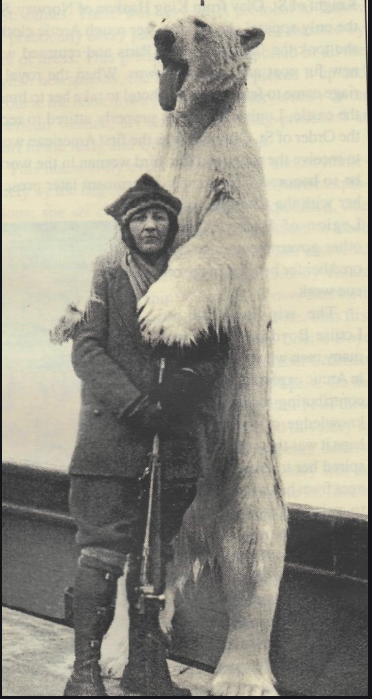
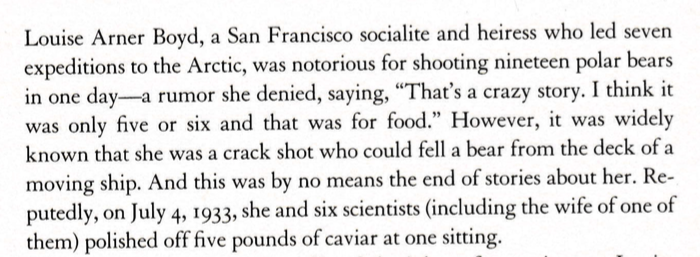
Text source. (Page taken from hardcopy, not available online.)
Posted By: Paul - Tue Jan 14, 2020 -
Comments (1)
Category: Animals, Eccentrics, Explorers, Frontiersmen, and Conquerors, Twentieth Century
Janelle Shane on Artificial Intelligence and Weirdness
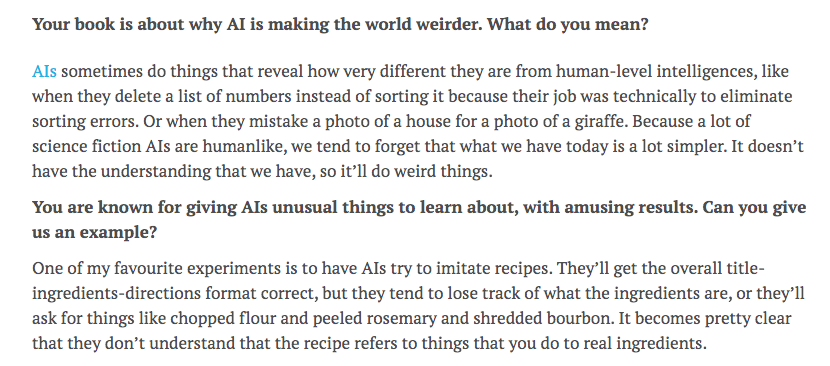
Posted By: Paul - Fri Jan 10, 2020 -
Comments (2)
Category: Ambiguity, Uncertainty and Deliberate Obscurity, Animals, Technology, AI, Robots and Other Automatons
Election 2020
Expect absurdist acts of political theater throughout the new year, from all sides.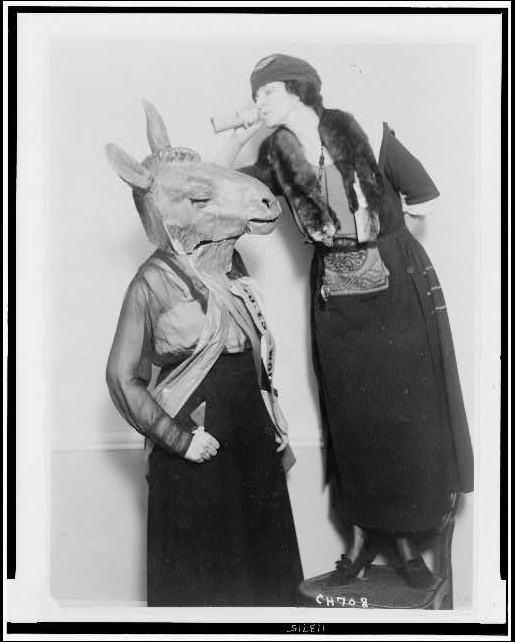
[Mrs. Guilford Dudley of Nashville with ear trumpet, talking into ear of Democratic donkey, played by Mrs. Mary Semple Scott in skit at 1920 National American Woman Suffrage Association in Chicago]
Photo source.
Posted By: Paul - Fri Jan 03, 2020 -
Comments (7)
Category: Animals, Anthropomorphism, Politics, Twentieth Century
Percy the Fainting Pigeon
Percy was a prize-winning racing pigeon with an odd habit:No matter where he is or where you put him, Percy keeps up the pose. On the top of the television, on the rim of the cup he won at the Royal Welsh Show, or tossed in the air, he holds it.
Even putting him on the floor next to Suzie the cat doesn’t cause a twitch.
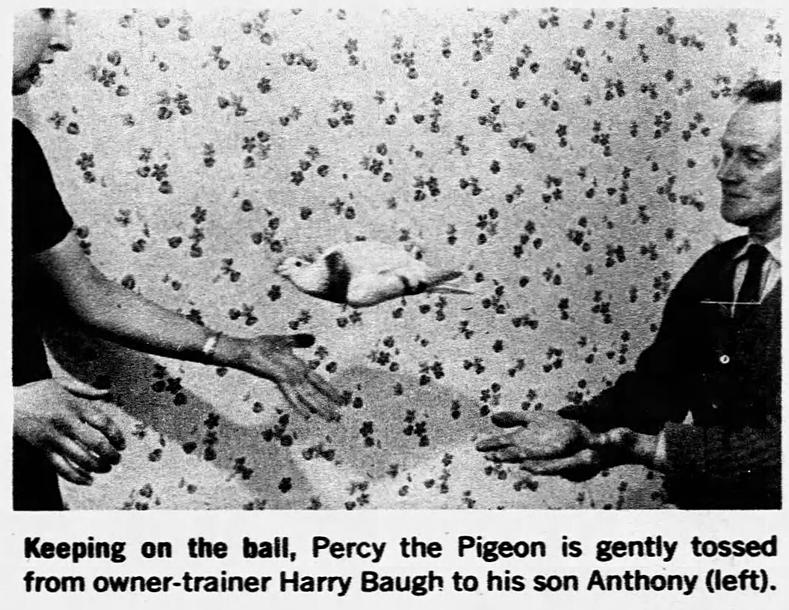
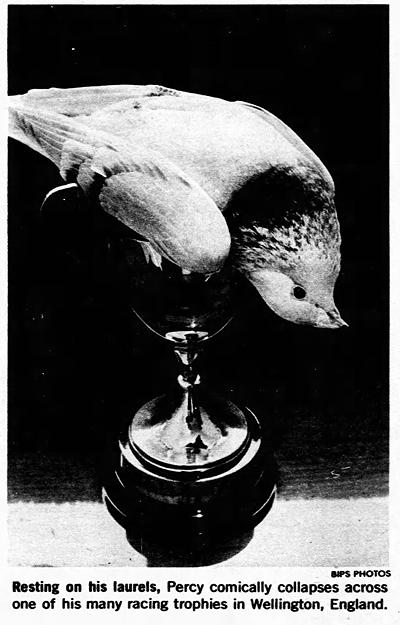
New York Daily News - Jan 19, 1969
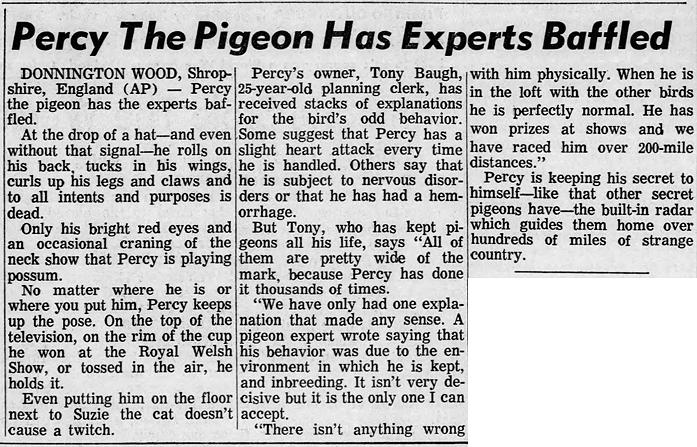
The Jackson Sun - Apr 10, 1968
Posted By: Alex - Fri Dec 27, 2019 -
Comments (4)
Category: Animals, 1960s
Mr. Horatio Knibbles
Apparently, someone said, "What if we remade Harvey, but with a kid in the Jimmy Stewart role?"Full movie in seven parts on YouTube.
IMDB entry.
Posted By: Paul - Fri Dec 27, 2019 -
Comments (0)
Category: Animals, Delusions, Fantasies and Other Tricks of the Imagination, Movies, Surrealism, Children, 1970s, Fictional Monsters
Birds and fish used as candles
If the power goes out and you don't have any candles, no problem. At least, if you happen to be in the Shetland Islands. Just stick a wick down the throat of a dead stormy petrel, and it can be used as a candle. The McGill University Office for Science and Society confirms this strange factoid. In fact, it notes that in Denmark Great Auks used to be used for the same purpose.Or, if you're in Alaska, a candlefish can be lit on fire and used for illumination. A National Geographic video (below) shows candlefish (aka eulachon) being caught, processed, and used as candles.

Minneapolis Star Tribune - Dec 22, 1929
Posted By: Alex - Mon Dec 16, 2019 -
Comments (4)
Category: Animals
Happy Thanksgiving 2019
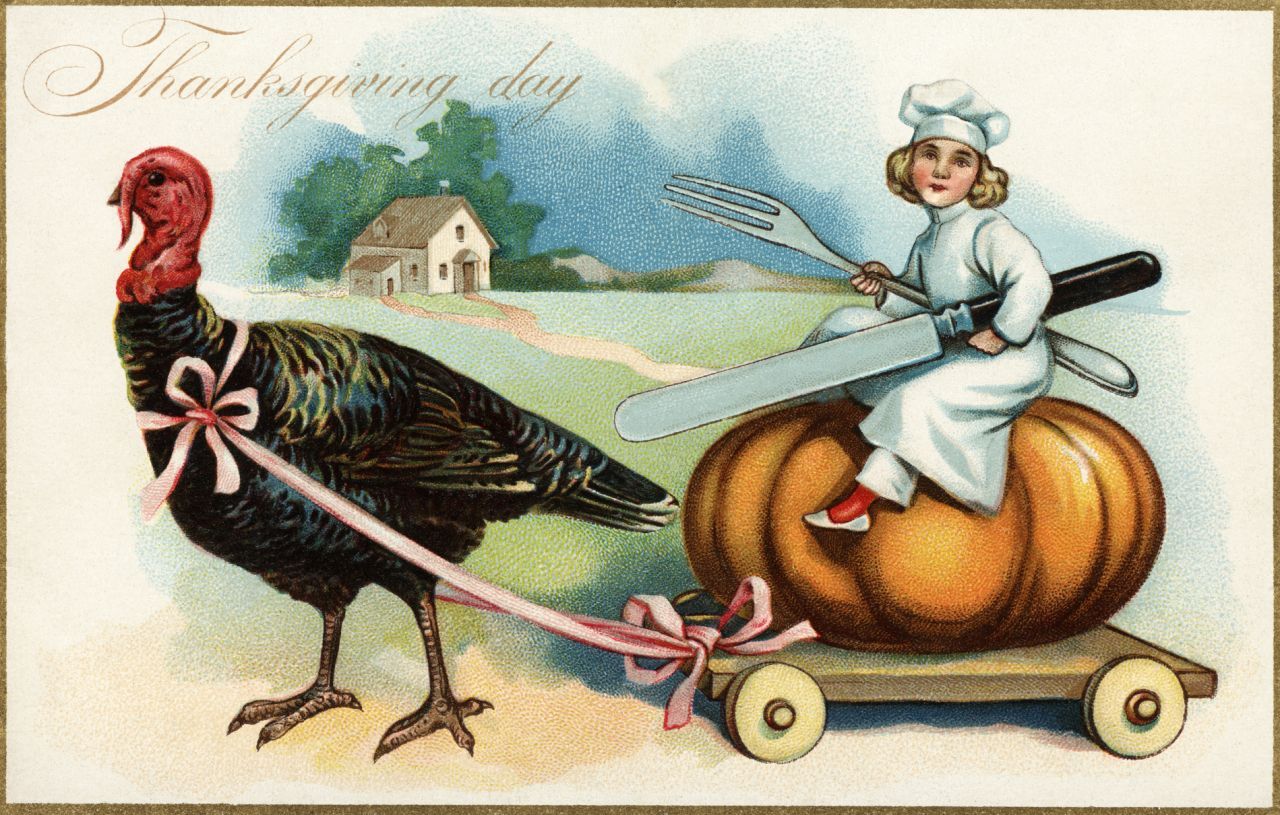
Posted By: Paul - Thu Nov 28, 2019 -
Comments (3)
Category: Animals, Holidays, Thanksgiving
Indlovu Gin
The website for Indlovu Gin describes it, somewhat euphemistically, as "The only gin designed by the African elephant from foraged botanicals." Put in plainer language, it's gin made with elephant dung. As the AP reports:
Posted By: Alex - Mon Nov 25, 2019 -
Comments (3)
Category: Animals, Excrement, Alcohol

| Who We Are |
|---|
| Alex Boese Alex is the creator and curator of the Museum of Hoaxes. He's also the author of various weird, non-fiction, science-themed books such as Elephants on Acid and Psychedelic Apes. Paul Di Filippo Paul has been paid to put weird ideas into fictional form for over thirty years, in his career as a noted science fiction writer. He has recently begun blogging on many curious topics with three fellow writers at The Inferior 4+1. Contact Us |




